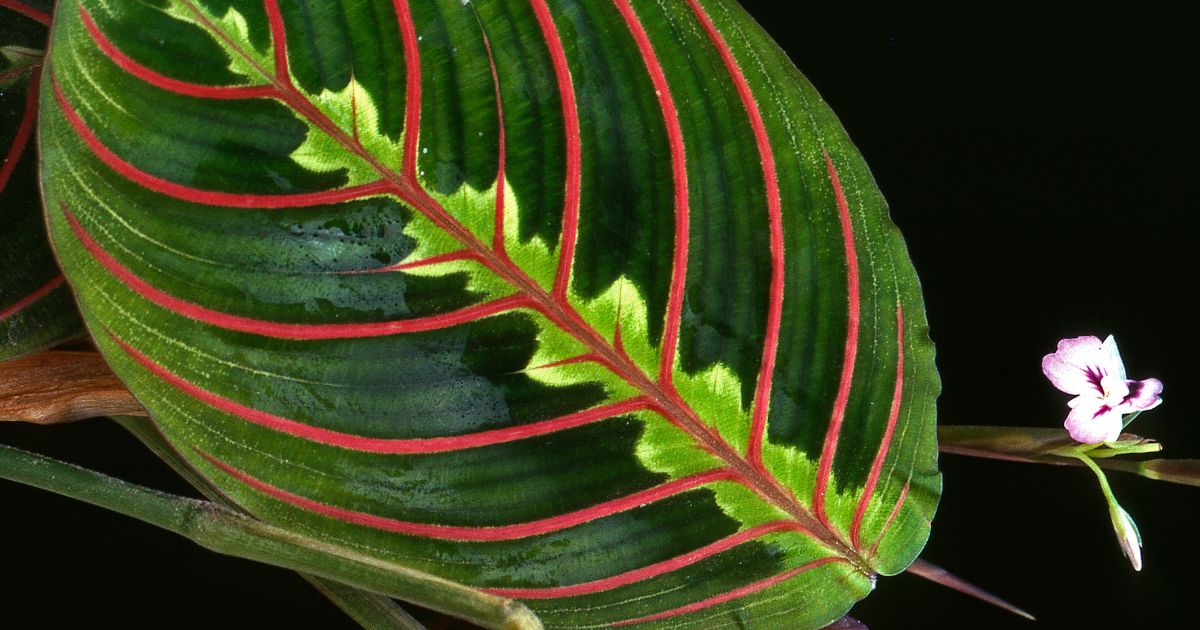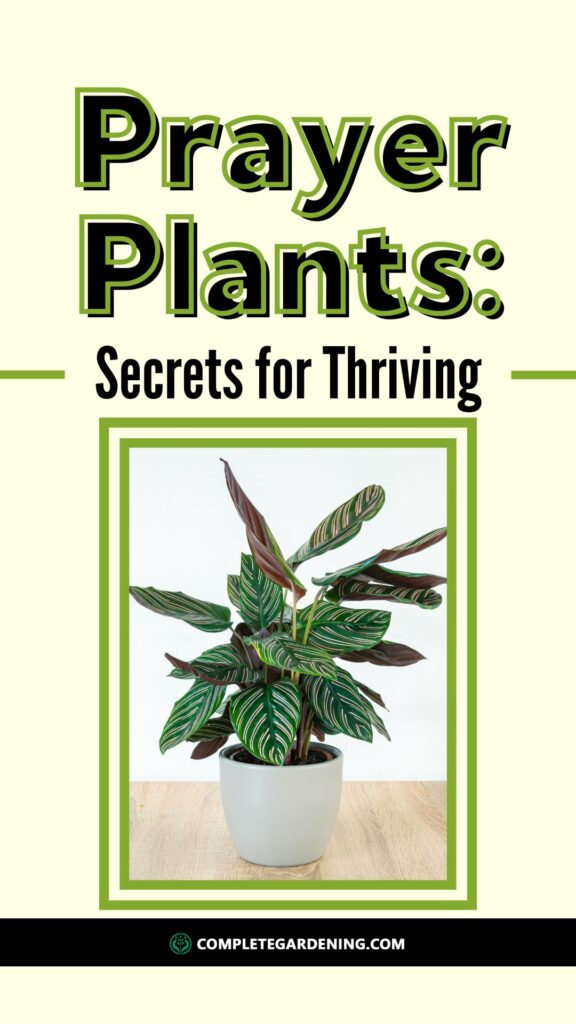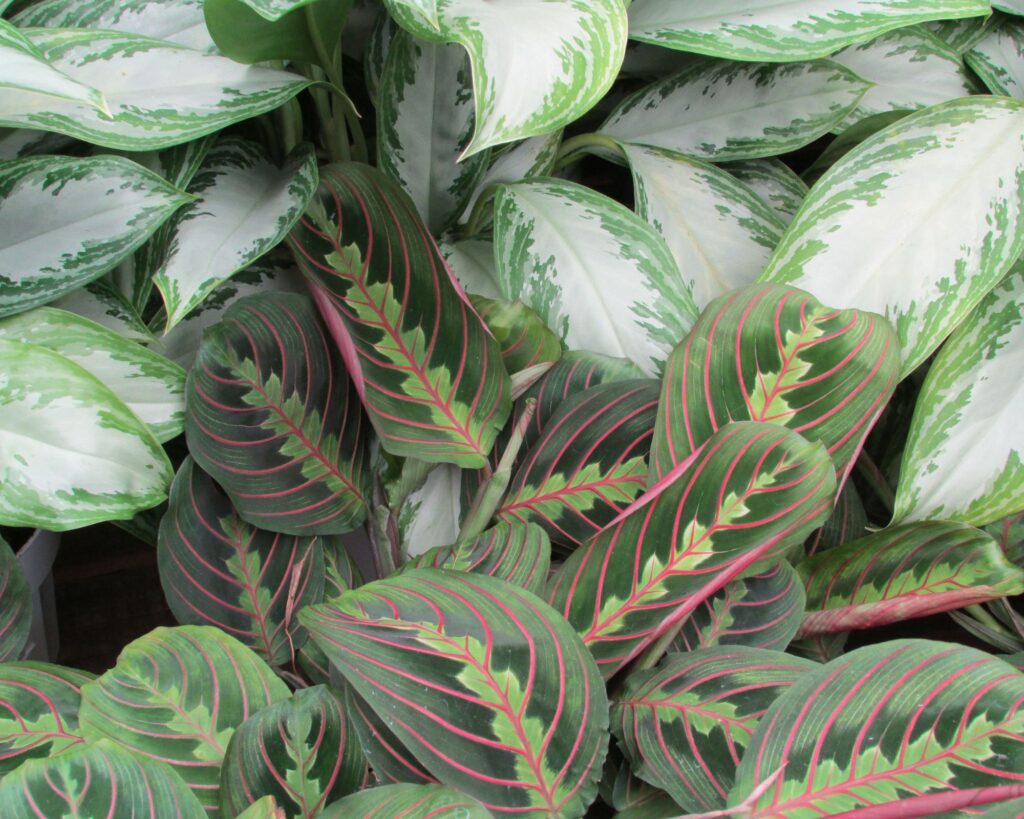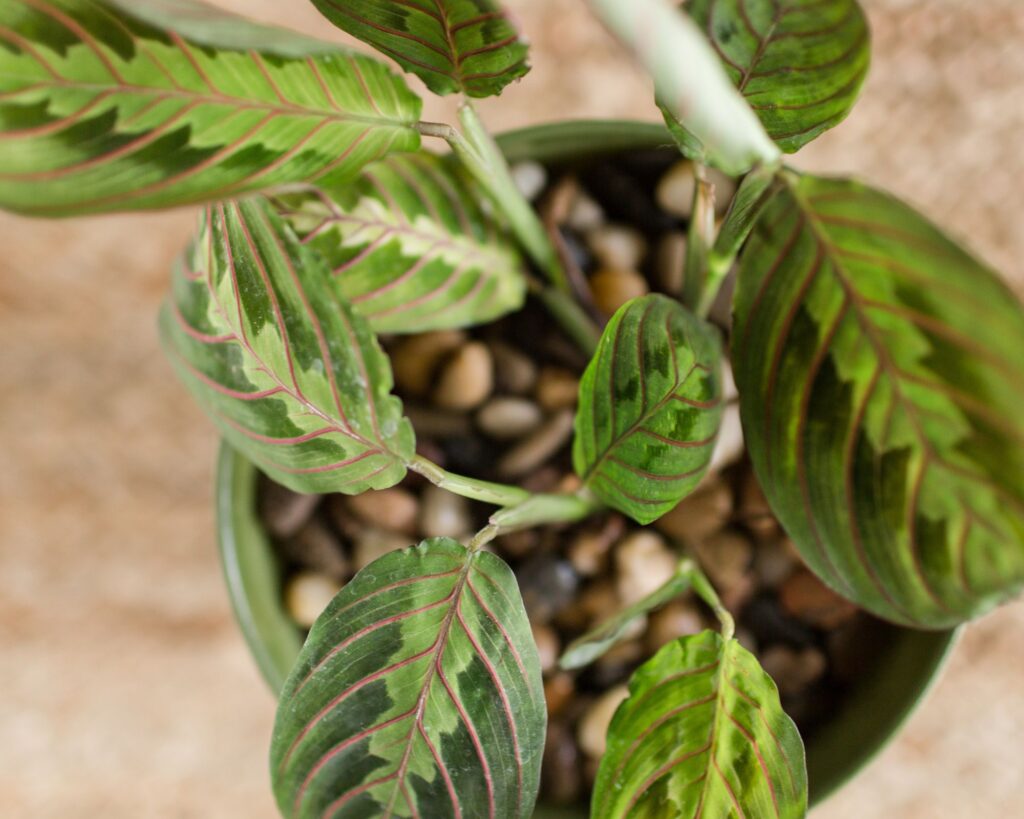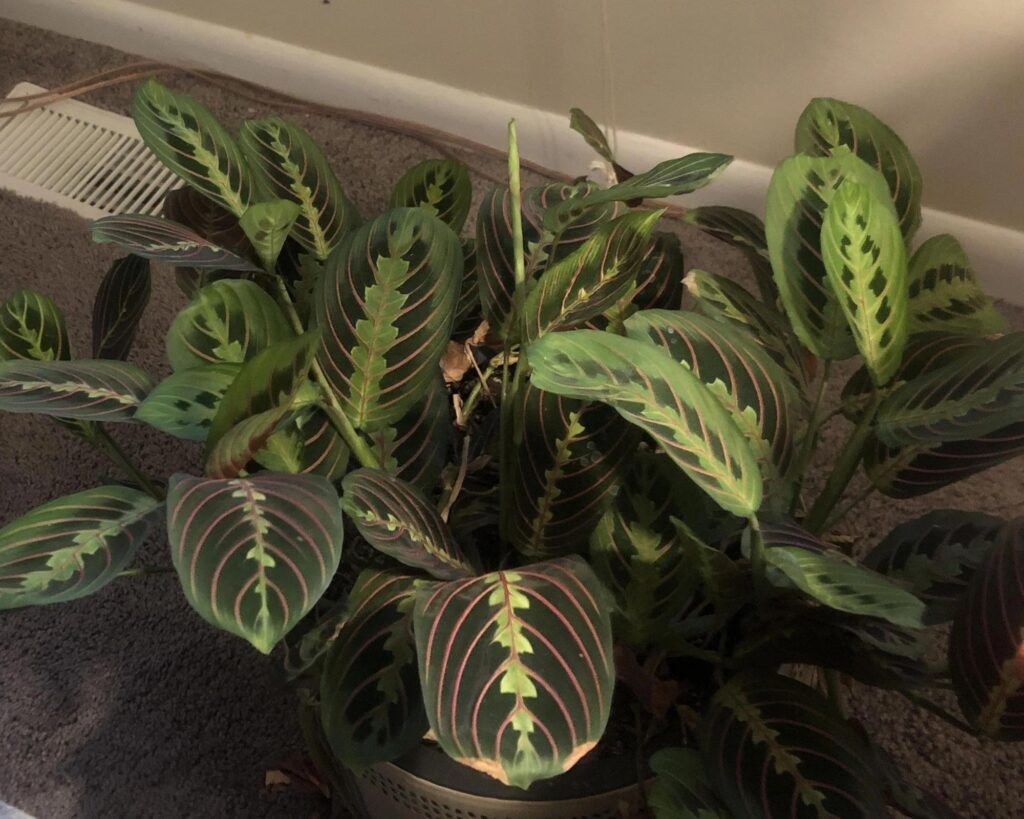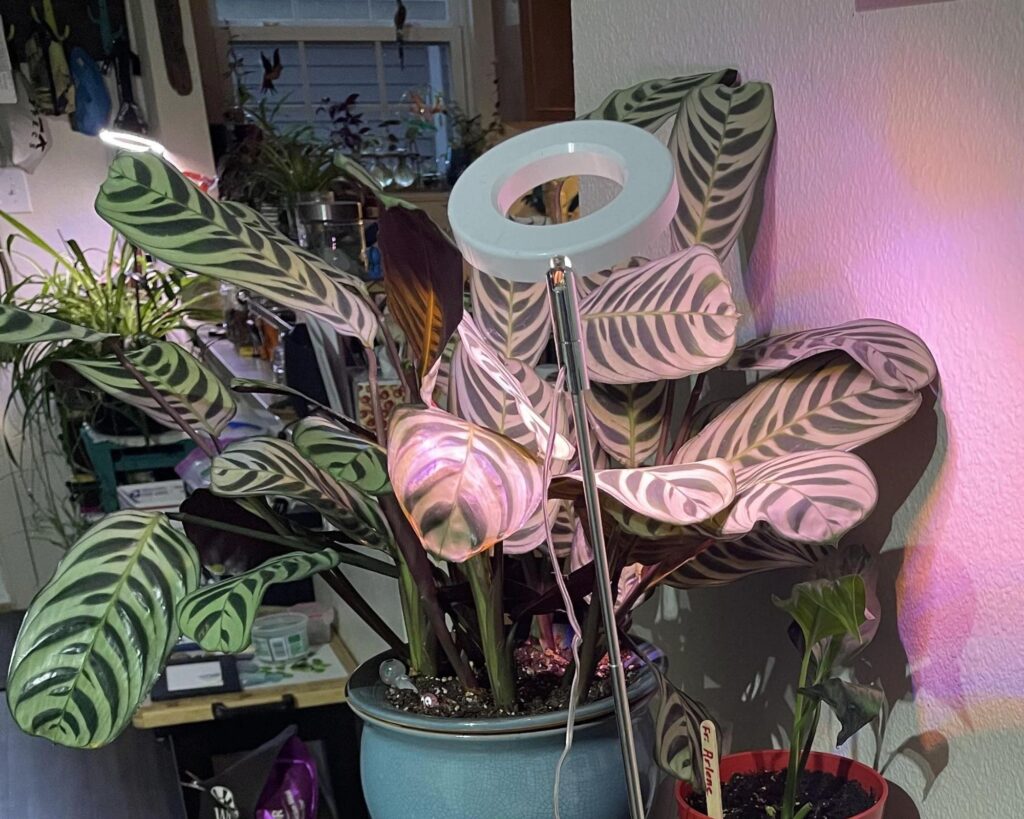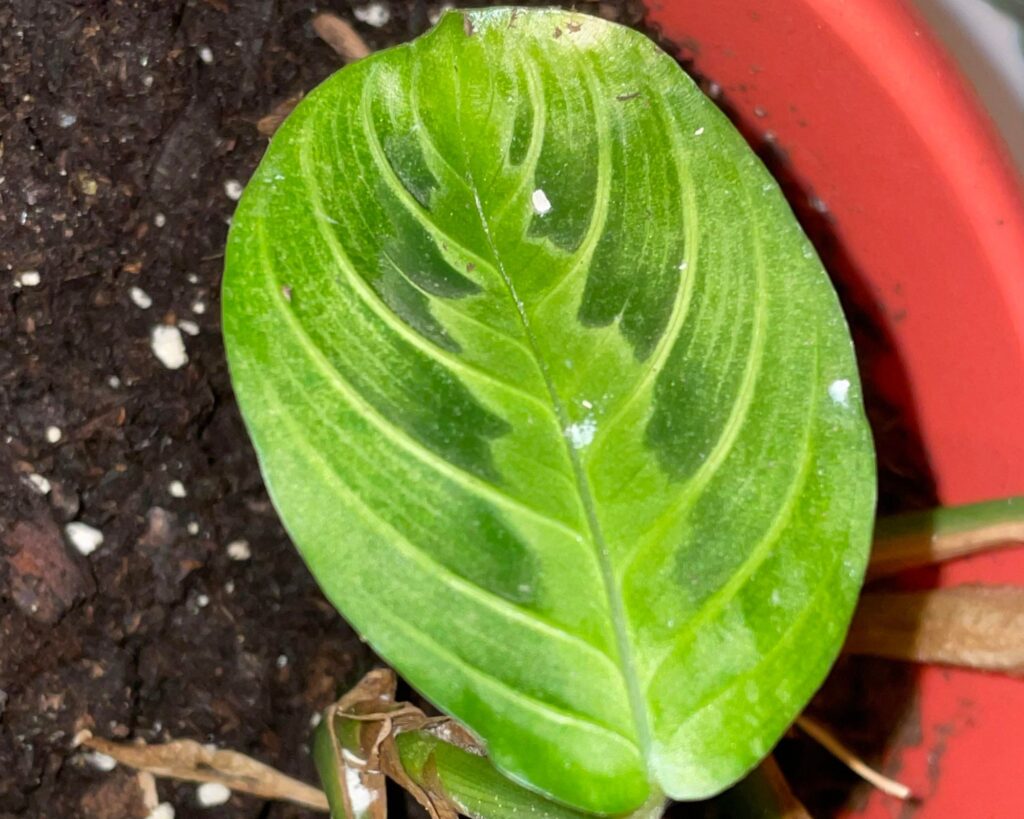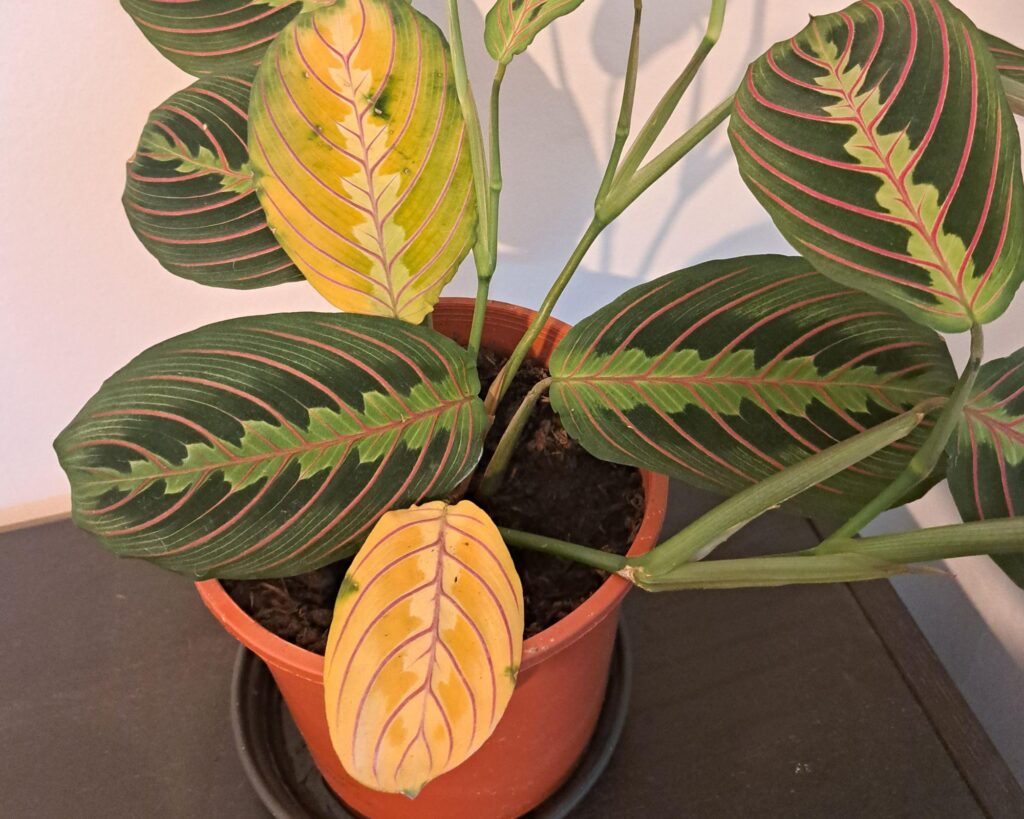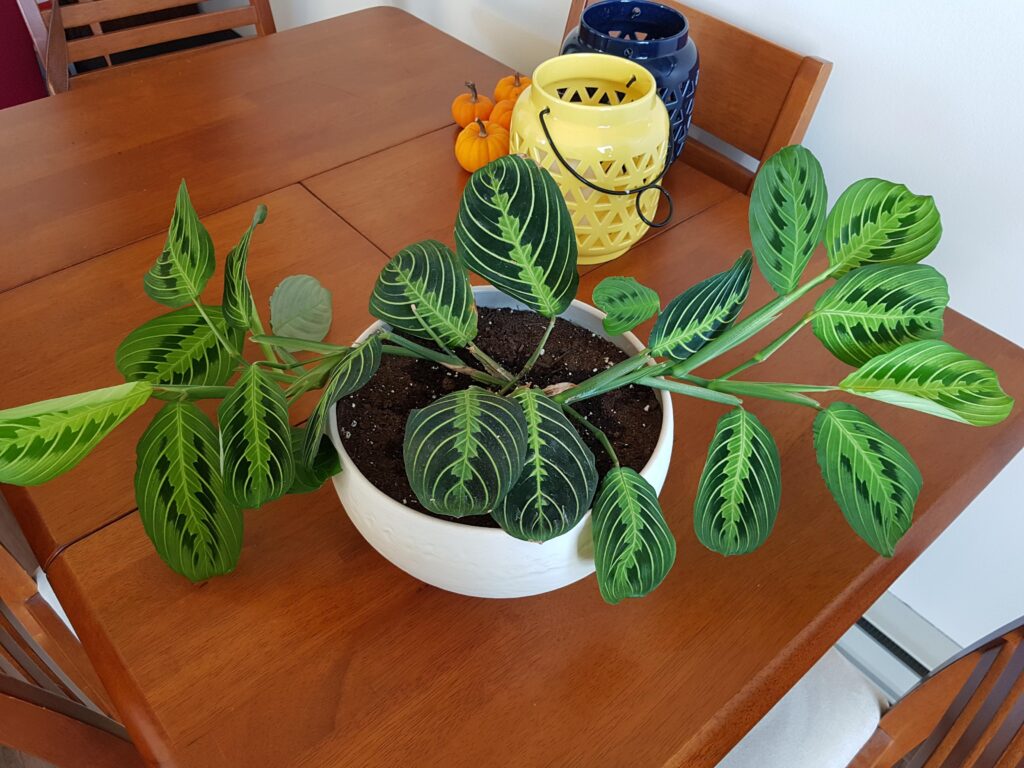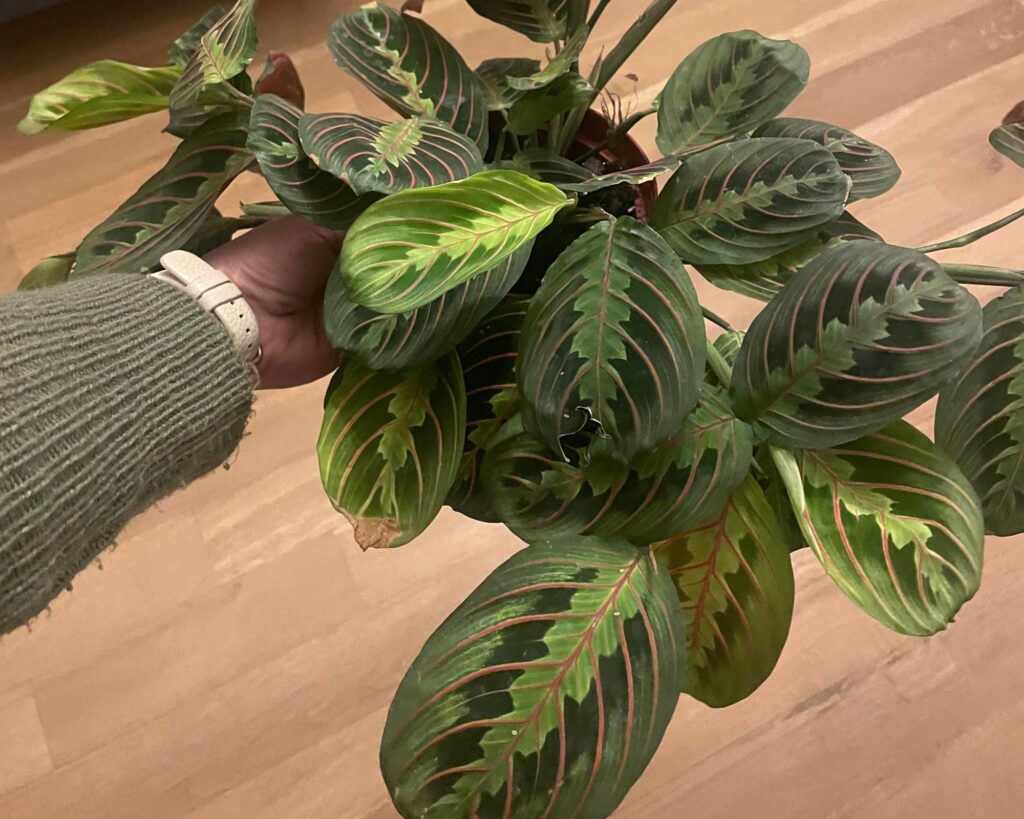Looking for a houseplant that’s as unique as it is low-maintenance? The Prayer Plant might be just the companion your indoor garden needs. With its striking foliage and leaves that literally move throughout the day, this plant is sure to spark conversation.
Imagine watching your plant fold its leaves up each evening – like it’s saying goodnight! But here’s the best part: Prayer Plants are easier to care for than you might think. As long as you give them the right environment, they’ll thrive in your home for years.
Ready to learn how? This guide will show you exactly how to keep your Prayer Plant lush, healthy, and thriving.
Understanding the Prayer Plant
Prayer plants are beautiful, easy-to-grow houseplants known for their striking, patterned leaves and unique movements. Learn about their exotic origin and different species to better care for these indoor beauties.
The Origin and Characteristics
Originally from the tropical forests of Central and South America, prayer plants thrive in warm, humid environments. Named for their leaf movements that resemble hands folded in prayer, these plants open their leaves during the day and close them at night.
Their leaves often feature vibrant patterns in green, red, and purple. Reaching a maximum height of about 12 inches, they are perfect for small spaces. Keep the soil moist but not waterlogged to mimic their natural habitat.
Types of Prayer Plants
There are several types of prayer plants, each with unique leaf patterns and colors. The most popular type is the Maranta leuconeura, also known as the Red Prayer Plant, with its striking red veins.
Another common variety is the Calathea, which has wider leaves with beautifully intricate designs. Then there’s Stromanthe, known for its pink and green leaves that add a splash of color.
Each type has slightly different care requirements, so it’s essential to know which variety you have.
Essential Care Basics
Proper care for Prayer Plants includes understanding their light needs, watering them correctly, and providing the right soil and nutrients.
Light Requirements
Prayer Plants thrive in bright, indirect light. Direct sunlight can scorch their leaves, leading to discoloration and damage. Place your plant near a north or east-facing window where it can receive filtered light throughout the day.
If natural light is insufficient, consider using a grow light to keep your plant healthy.
Watering Techniques
Consistency is key when watering Prayer Plants. They prefer moist but not soggy soil. Water your plant when the top inch of soil feels dry to the touch. Use room temperature water and ensure that excess water drains away to avoid root rot.
A consistent watering schedule will help maintain the plant’s hydration without overwatering.
Soil and Fertilization Needs
Prayer Plants flourish in well-draining soil with good aeration. A mix of potting soil, peat moss, and perlite works well. Fertilize your plant monthly during the growing season (spring and summer) with a balanced, water-soluble fertilizer.
Reduce fertilization in the fall and winter to prevent overfeeding and nutrient buildup.
Creating the Perfect Environment
To help your prayer plant thrive, focus on maintaining optimal temperature and humidity, as well as proper repotting and pruning practices.
Temperature and Humidity
Prayer plants prefer a warm environment with temperatures between 65-75°F (18-24°C). They don’t tolerate temperature fluctuations well, so keep them away from drafts or direct heating vents.
Humidity is crucial for prayer plants. Aim for 50-60% humidity to mimic their natural tropical habitat. You can achieve this by placing a humidifier nearby, using a pebble tray with water under the plant pot, or misting the leaves regularly.
Avoid placing your plant in dry areas, like near air conditioners, which can cause leaf edges to brown and crisp.
Repotting and Pruning
Repot your prayer plant every 1-2 years to provide fresh soil and room for growth. Choose a well-draining potting mix and a slightly larger pot to avoid water retention issues. Spring is the best time for repotting when the plant is actively growing.
Pruning helps maintain the plant’s shape and encourages bushier growth. Use sharp, sterile scissors to trim any brown or yellow leaves and to shape the plant as desired. Regularly remove dead or damaged leaves at the stem’s base.
By following these practices, you can ensure your prayer plant remains healthy and vibrant.
Troubleshooting Common Issues
Encountering challenges in caring for your prayer plant is normal. The most frequent issues include pests and diseases, yellowing leaves, as well as wilting and drooping.
Spotting Pests and Diseases
Prayer plants are susceptible to pests like spider mites, aphids, and mealybugs. These pests can cause damage to leaves, making them appear discolored or distorted.
Inspect your plant regularly. Use a magnifying glass to spot small insects. For treatment, use insecticidal soap or neem oil. Ensure you maintain proper humidity, as dry air encourages pest infestations. Clean the leaves with a damp cloth to remove dust and deter pests.
Addressing Yellowing Leaves
Yellow leaves are often a sign of overwatering or poor drainage. Check the soil; it should be moist but not soggy. Ensure that your pot has drainage holes to prevent waterlogging.
Use well-draining soil and consider a balanced fertilizer. If your plant is in direct sunlight, move it to indirect light. Yellowing can also result from nutrient deficiencies, so a regular feeding schedule is essential.
Wilting and Drooping Solutions
Wilting or drooping usually indicates either under-watering or over-watering. Check the soil moisture by sticking your finger an inch into the soil. If it’s dry, water your plant; if it’s still moist, allow it to dry out before watering again.
Ensure your prayer plant is in a spot with consistent humidity. Misting the leaves or using a humidity tray can help revive a droopy plant. Avoid placing it near drafts or air conditioning vents that can cause stress.
Tips for Long-Term Success
Maintaining a healthy prayer plant involves regular care routines and understanding how to propagate new plants.
Routine Maintenance
Water your prayer plant when the top inch of soil feels dry. Overwatering can lead to root rot, so let the soil dry slightly. Ensure your plant gets bright, indirect light, as direct sunlight can scorch its leaves.
Fertilize your prayer plant every month during the growing season with a balanced, water-soluble fertilizer. In the winter, reduce feeding to once every two months.
Wipe the leaves with a damp cloth to remove dust. This keeps your plant looking fresh and allows it to breathe better. You can also mist the leaves occasionally to maintain humidity.
Propagation Pointers
To propagate your prayer plant, take a stem cutting just below a leaf node. Ensure the cutting has at least two leaves. Place the cutting in water and keep it in a warm, bright area.
Change the water every few days to prevent stagnation. Within a few weeks, you should see roots developing. Once the roots are a few inches long, transfer the cutting to a pot with fresh soil.
Using a narrow container can help support the growing roots. Keep the soil consistently moist during the first few weeks, and ensure it’s in a humid environment to encourage growth.
Caring for a Prayer Plant is not only manageable but also incredibly rewarding. Its mesmerizing leaf movements and vibrant patterns make it a standout addition to any indoor garden.
By maintaining the right balance of light, humidity, and proper watering, you’ll have a thriving plant that adds both beauty and interest to your home.
Whether you’re looking to expand your plant collection or just starting out, the Prayer Plant is a perfect choice to brighten up your space and bring a little tropical elegance into your life.
